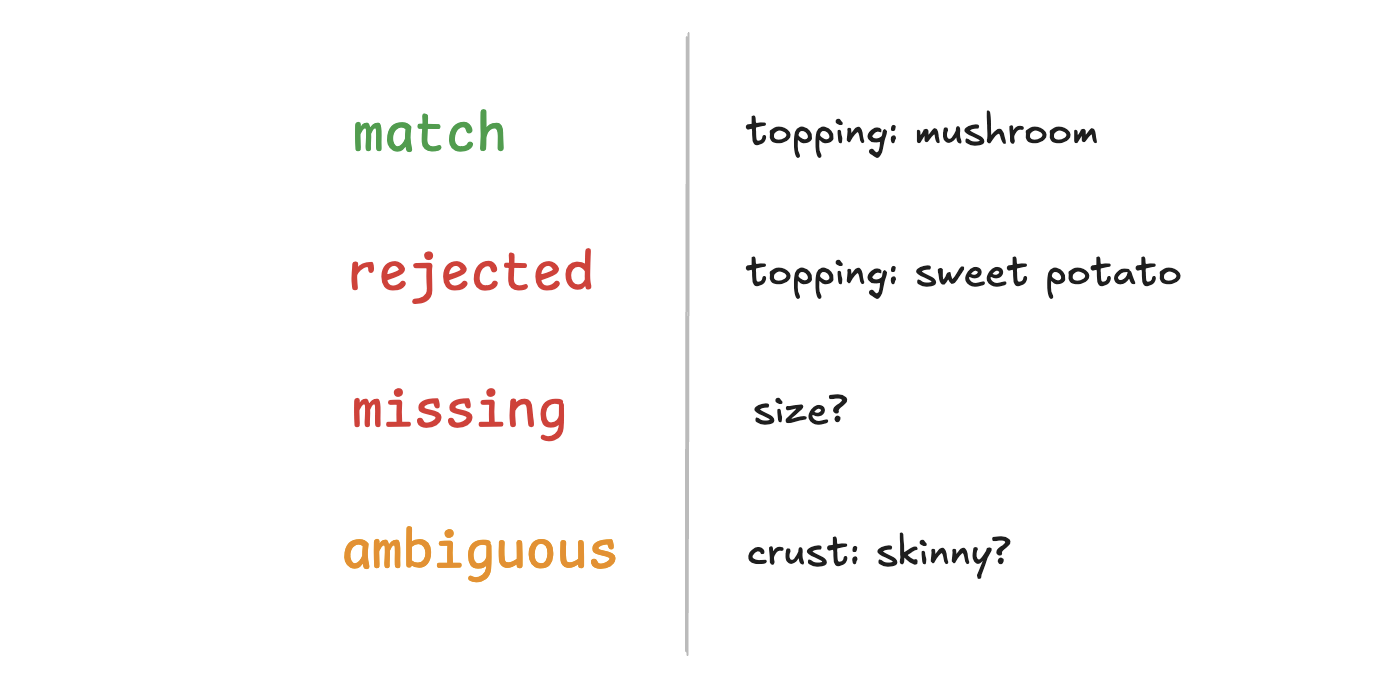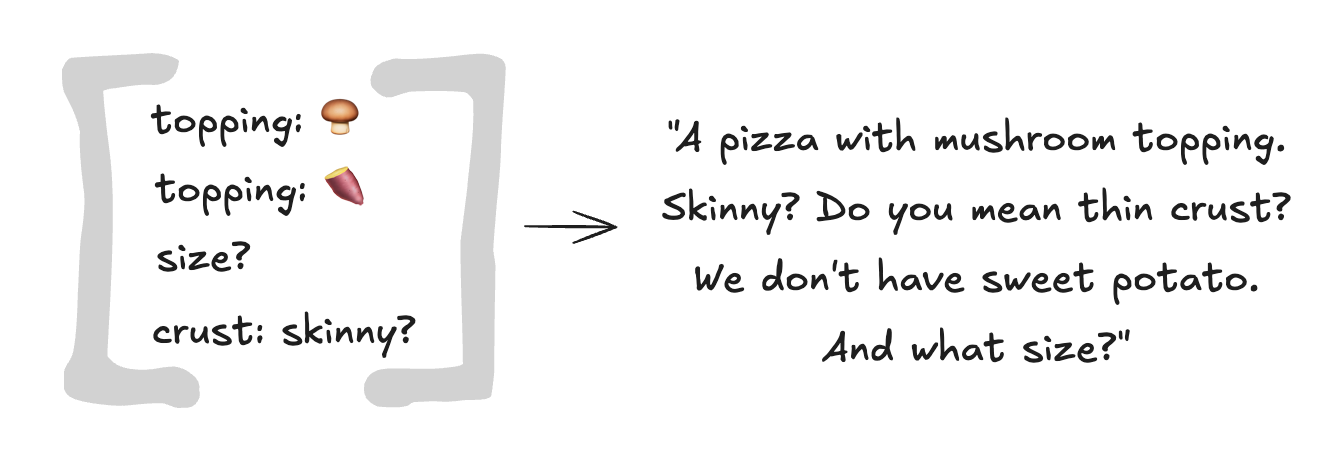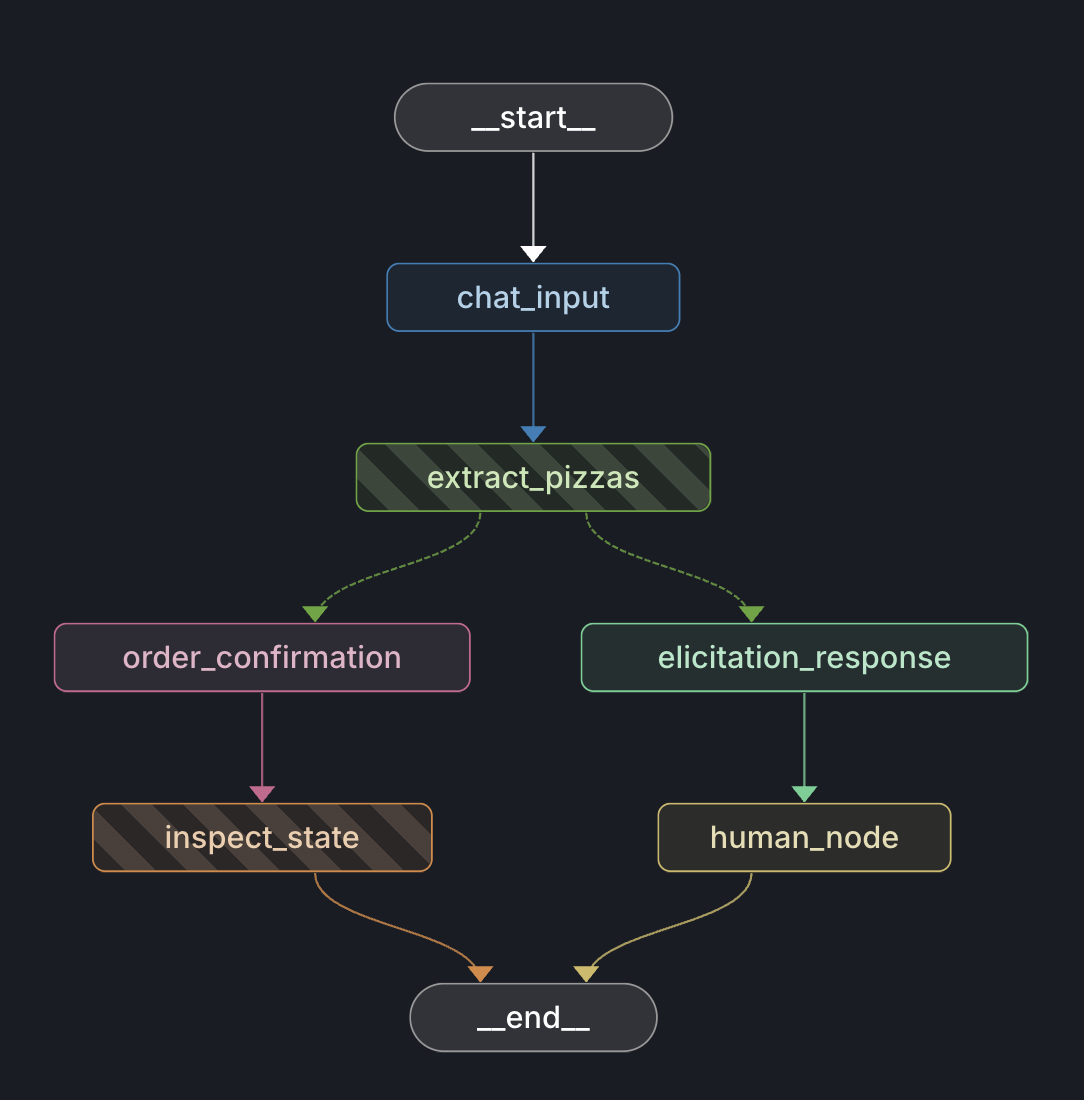Elicitation
When a human requests fuzzily, all parts of the request should be acknowledged.
In a previous post Prompt Builder, I presented a strategy to turn fuzzy human input into a structured one. Although it would have been effective for resolving ambiguities, it wasn’t a complete model to handle all possible cases.
If you were to order a pizza with sweet potato on it, you’d need to acknowledge and reject the topping instead of ignoring it. An agent who does otherwise would be rude.
 |
|---|
| Sweet potato mousse is a common pizza topping in Korea |
Imagine a drunk user using the chat interface to order pizza:
{ "user":
"I want a skinny mushoom pizza with sweet potato" }
{ "agent":
"A pizza with mushroom topping.
Skinny? Do you mean thin crust?
We don't have sweet potato.
And what size?" }
If you got a half-baked ridiculous order like above, the agent should elicit a valid request by acknowledging rejections, accepting matches, resolving ambiguities, and asking for missing fields.

There’s an invisible form to fill, whose partials are returned by either chat or GUI. By classifying the specifications of natural language input into the form, we get a partial. We also ask the validation step to produce rejected and ambiguous inputs, for active listening.
Classify and acknowledge all parts of a user request into oneof four: match, rejected, missing, ambiguous.

This gets translated into a question directed back at the user, either one question at a time or all at once.

The session state can either be saved on the client or server side. Once a complete pizza is ready to order, the user can be prompted for up-sells like extra cheese or another pizza.

See the code here: Langgraph implementation on Github